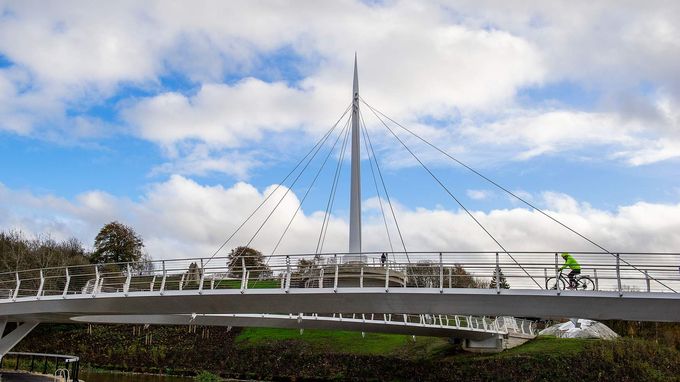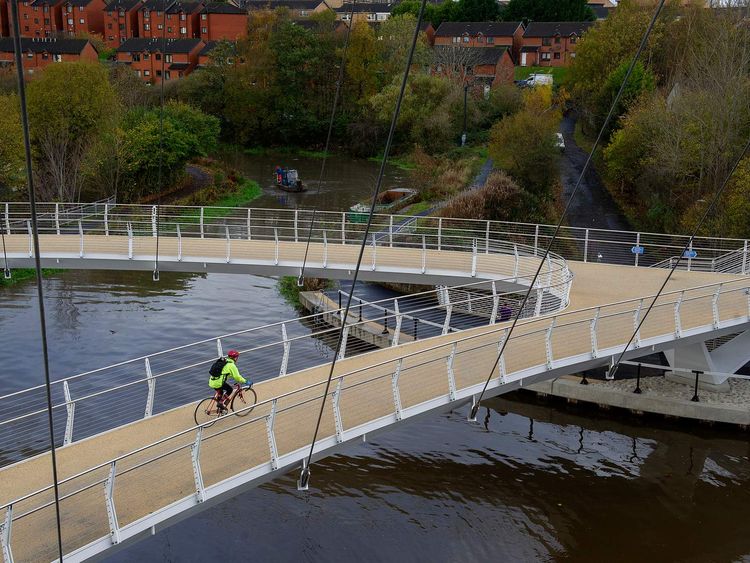Stockingfield Bridge, Glasgow

The innovative curved design of the Stockingfield Bridge in north Glasgow enables it to meet the requirements of a broad range of canal users (credit: Scottish Canals)
Civil engineers are accustomed to gauging the value of infrastructure in economic terms, but one of the most important factors that governments and clients consider is social value. They want to understand how an asset would improve as many lives as possible in the communities it would serve.
The Stockingfield Bridge project in the north of Glasgow is a case in point. It had social value at its heart from the planning stage through to design, delivery and beyond. Indeed, the bridge won the 2022 ICE People’s Choice Award for its positive impact on the local population.
This two-way-spanning cable-stayed bridge for pedestrians, cyclists and wheelers crosses the Forth and Clyde Canal at its junction with the Port Dundas branch. The structure has reconnected three communities – Ruchill, Gilshochill and Maryhill – that had effectively been separated by the canal system since its construction in the late 18th century.
The bridge has completed the National Cycle Network between Glasgow and Edinburgh. And, crucially, it has opened up a safe, car-free route into the city centre for local people.
Scottish Canals could have commissioned a series of simple and relatively low-cost canal crossings. Instead, the government body chose to spend £15m on a landmark structure featuring an observation deck and works by local artists, with the aim of maximising the social and economic value provided to local communities.
This Tech Talk podcast features two people who have been closely involved in the project: Richard Millar and Alison Ramsey.
Millar, an ICE Fellow, is Scottish Canals’ chief operating officer. He has been involved in planning for a bridge at Stockingfield since 2008 and has also been responsible for delivering two of Scotland’s best-known modern attractions: the Falkirk Wheel and the Kelpies.
Ramsey is social value and performance manager at Scape, a public-sector procurement organisation dedicated to creating efficiency and social value through the built environment. Contractor Balfour Beatty delivered Stockingfield Bridge under Scape’s Scottish civil engineering framework.
In this podcast, hosted by ICE knowledge research lead James Crumly, they describe:
- How social value was central to the project’s planning, design and delivery
- The role that civil engineers can play in achieving maximum social value
- What value looks like to stakeholders in an asset throughout its life
What we’ve seen with these major projects is a real opportunity to engage youth in engineering and make it exciting
Richard Millar, chief operating officer, Scottish Canals
Sign up to receive news from ICE Knowledge direct to your inbox.







